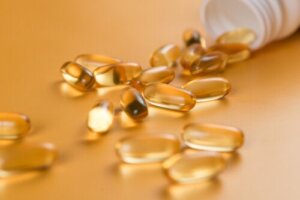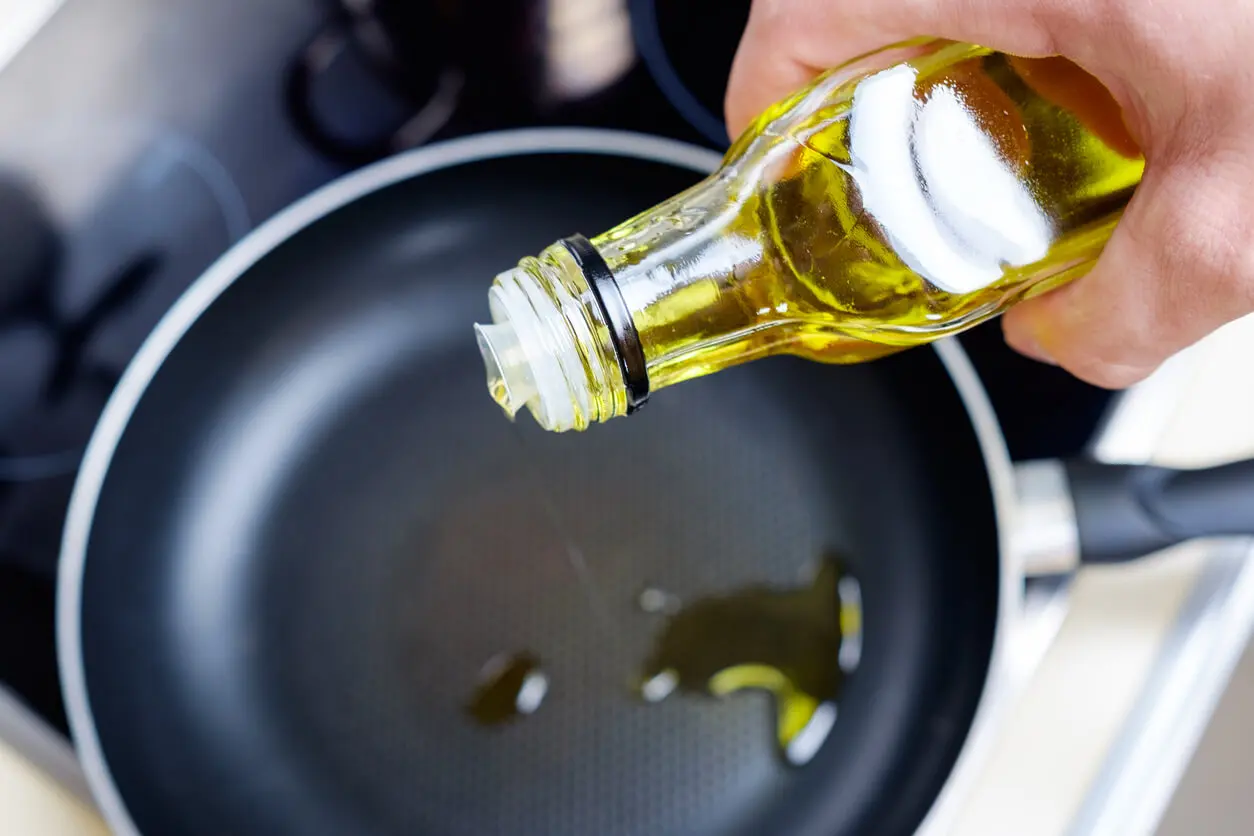Vitamin E Toxicity: What Should You Know?


Written and verified by the nutritionist Saúl Sánchez Arias
Vitamin E is an essential nutrient for the body, but it can become toxic. It is possible to experience an overdose if the established daily maximums are exceeded, so be very careful with vitamin E supplements. Find out all about vitamin E toxicity in this article.
It’s important to note that micronutrients are always maintained in relatively narrow concentration ranges within the body. The best approach is to have a varied and balanced diet to ensure that deficits aren’t experienced, although in some cases it’s necessary to provide an extra supply. One such example would be in athletes.
Vitamin E functions
According to a study published in the journal IUBMB Life, vitamin E can act as a powerful antioxidant in the body. It helps to neutralize the formation of free radicals and their subsequent accumulation in the tissues. Thanks to this, the risk of experiencing chronic pathologies is reduced.
Moreover, vitamin E also helps in the maintenance of immunity, and activates cells related to the defense system. Research published in the journal Nutrients demonstrates this.
Experts are also investigating whether a sufficient intake of this element could help to prevent neurodegenerative pathologies, or at least facilitate their management. It’s speculated that the antioxidant power helps to maintain a state of homeostasis, preventing the progression of neuronal degeneration.
Sources of vitamin E
We can find several foods with a high vitamin E content. Examples would be soybean, sunflower, safflower, and corn oils.
Sunflower seeds, almonds, hazelnuts, and peanut butter also stand out for their high content in this element. Finally, we would highlight fruits and vegetables such as kiwis, tomatoes, spinach, and broccoli.

Discover more here: 5 Ways to Use Vitamin E Capsules for Skin Care
Is it possible to suffer an overdose of vitamin E?
Vitamin E is fat-soluble and can therefore accumulate in the body’s tissues. This means that very high doses, consumed chronically, can generate toxicity. Although this isn’t a frequent scenario, it would cause complications.
An optimal daily dose of vitamin E of 15 milligrams is proposed.
Vitamin E toxicity
The maximum tolerable amount of vitamin E for humans is 1000 mg per day. Beyond this, the risk of toxicity or overdose increases, so it isn’t advisable to supplement above these values.
It should be noted that vitamin E supplementation isn’t positive in all contexts. For example, it isn’t advisable for athletes to consume extremely high doses. If they do, then post-exercise muscle adaptations may be reduced due to its high antioxidant effect. This is suggested by a study published in the International Journal of Environmental Research and Public Health.
In itself, a person suffering from vitamin E toxicity may experience increased bleeding. This is because the substance interferes with the blood’s natural anticoagulant capacity. In this sense, the risk of suffering a stroke would be increased.
Interaction with drugs
Vitamin E in excess is capable of interacting with drugs that the person is taking. Recalling what we mentioned earlier, it’s worth noting that the toxicity potentiates the anticoagulant action of aspirin and warfarin.
Interaction has also been reported with tamoxifen, a medication recommended for the treatment of breast cancer. Thus, patients with this oncological pathology should receive measured doses of vitamin supplements. In addition, there’s interaction with immunosuppressants, so the same criteria apply to transplant patients.
Find out more here: Vitamin E: 6 foods to eat more of it
How to supplement and avoid vitamin E toxicity?
Vitamin E supplements are beneficial for those who have developed a vitamin E deficiency. They’re also beneficial for patients with inflammatory pathologies or with problems absorbing fats due to some alteration of the intestinal functional capacity.
Even in athletes, it could be useful, but only when fatigue levels are very high. However, in these cases, it isn’t recommended to extend the intake beyond 2 weeks.
Of course, many people consume this type of supplement in order to improve the appearance of their skin or hair, and even with the aim of boosting immune function. However, this isn’t always necessary.
There are several alternatives with less risk of toxicity. It’s usually best to consider a varied and balanced diet.

Vitamin E can create toxicity
Vitamin E is indispensable for the human body. However, it could be toxic when certain doses are exceeded on a regular basis, due to its capacity to accumulate in the body. Something similar happens with vitamin A, so excessive supplementation with both elements is not recommended.
It’s important to note that it’s more common to experience deficiencies of these nutrients than overdoses. Neither of these scenarios are beneficial. When vitamin concentrations drop, problems related to oxidative balance are experienced.
All cited sources were thoroughly reviewed by our team to ensure their quality, reliability, currency, and validity. The bibliography of this article was considered reliable and of academic or scientific accuracy.
- Higgins MR, Izadi A, Kaviani M. Antioxidants and Exercise Performance: With a Focus on Vitamin E and C Supplementation. Int J Environ Res Public Health. 2020;17(22):8452. Published 2020 Nov 15. doi:10.3390/ijerph17228452
- Lee GY, Han SN. The Role of Vitamin E in Immunity. Nutrients. 2018;10(11):1614. Published 2018 Nov 1. doi:10.3390/nu10111614
- Miyazawa T, Burdeos GC, Itaya M, Nakagawa K, Miyazawa T. Vitamin E: Regulatory Redox Interactions. IUBMB Life. 2019;71(4):430-441. doi:10.1002/iub.2008
- Neubauer, Oliver, and Christina Yfanti. “Antioxidants in athlete’s basic nutrition: considerations towards a guideline for the intake of vitamin C and vitamin E.” (2015).
- Podszun M, Frank J. Vitamin E-drug interactions: molecular basis and clinical relevance. Nutr Res Rev. 2014 Dec;27(2):215-31. doi: 10.1017/S0954422414000146. Epub 2014 Sep 16. PMID: 25225959.
This text is provided for informational purposes only and does not replace consultation with a professional. If in doubt, consult your specialist.








